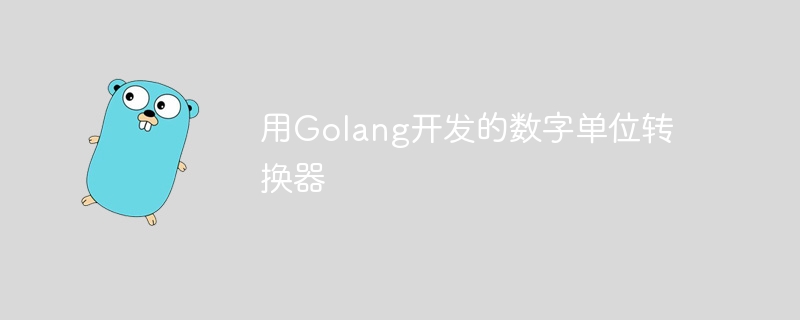

Number unit converter is a common tool that can help us convert between different units, such as conversion between length units, conversion between weight units, etc. Today, we will use Golang to develop a numerical unit converter, let's take a look at a specific code example.
First, we need to create a new Golang file named converter.go. In this file, we will define a structure Converter to store information and methods related to the converter.
package main
import (
"fmt"
)
type Converter struct {
Value float64
}
func (c Converter) ToMeter() float64 {
return c.Value * 0.3048
}
func (c Converter) ToFeet() float64 {
return c.Value / 0.3048
}
func main() {
c := Converter{Value: 1.0}
fmt.Printf("1 foot is equal to %.2f meters
", c.ToMeter())
c = Converter{Value: 1.0}
fmt.Printf("1 meter is equal to %.2f feet
", c.ToFeet())
}In this code, we first define a structure Converter, which contains a field Value to store the value to be converted. Then, we define two methods ToMeter and ToFeet, which are used to convert feet to meters and meters to feet respectively. Finally, in the main function, we create a Converter instance, convert feet to meters and meters to feet, and print out the results.
Run the above code, we can see the following output:
1 foot is equal to 0.30 meters 1 meter is equal to 3.28 feet
In this way, we have successfully developed a simple digital unit converter using Golang. Of course, you can extend this converter according to your needs and add more unit conversion methods and functions. Hopefully this example can help you better understand how to develop a numeric unit converter using Golang.
The above is the detailed content of Create a numerical unit converter, developed using Golang. For more information, please follow other related articles on the PHP Chinese website!
 How to define variables in golang
How to define variables in golang
 What are the data conversion methods in golang?
What are the data conversion methods in golang?
 What are the commonly used libraries in golang?
What are the commonly used libraries in golang?
 What is the difference between golang and python
What is the difference between golang and python
 How to solve operation timed out
How to solve operation timed out
 C language variable naming
C language variable naming
 How to solve internalerror0x06
How to solve internalerror0x06
 What should I do if the docker container cannot access the external network?
What should I do if the docker container cannot access the external network?




